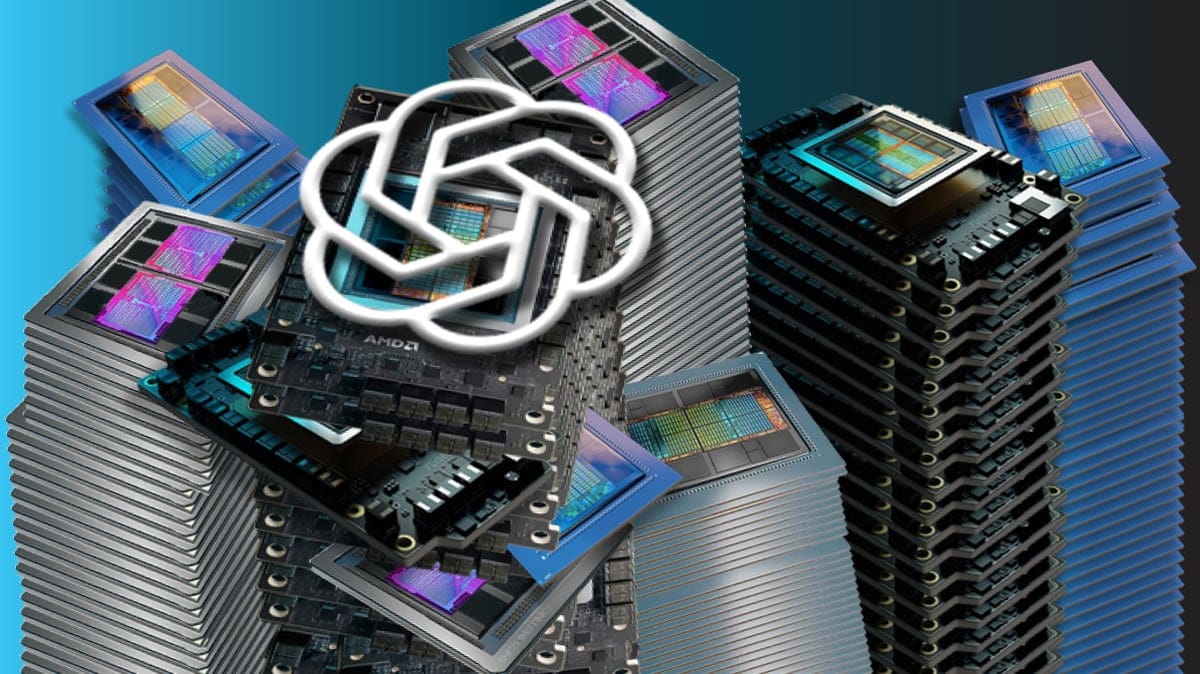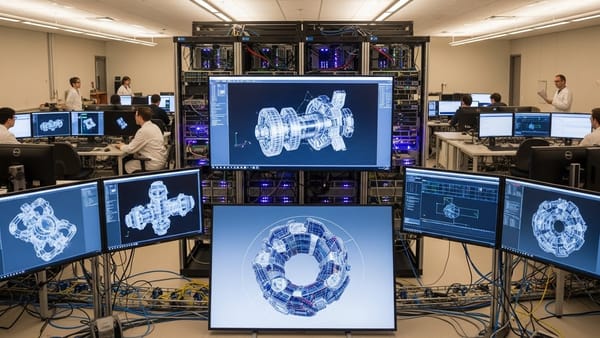OpenAI Strengthens Ties With AMD: OpenAI’s latest multibillion-dollar chip deal would give it 6 gigawatts of computing power and up to 10 percent of AMD
OpenAI, strapped for processing power to drive a worldwide constellation of planned data centers, turned to Nvidia’s archrival AMD.

OpenAI, strapped for processing power to drive a worldwide constellation of planned data centers, turned to Nvidia’s archrival AMD.
What’s new: In an unusual deal, OpenAI agreed to purchase what may amount to tens of billions of dollars of AMD Instinct GPUs and received the right to acquire a substantial portion of the chip designer’s shares, essentially for free, if certain conditions are met. The deal, which is to be completed in phases starting next year, covers enough GPUs to draw 6 gigawatts of power (roughly 6 times the city of San Francisco’s peak electricity demand) and up to 10 percent of AMD’s stock. It enables OpenAI to diversify and extend its supply of AI processors to build out a gargantuan size and number of data centers, while AMD secures a top-shelf customer and validates its products as competitors to GPU kingpin Nvidia’s — a huge boost to its credibility and sales in the AI market.
How it works: Completion of the financial deal is contingent on both companies reaching specific milestones that are largely undisclosed. OpenAI must hit deployment targets for AMD chips, and AMD’s stock price must hit certain levels.
- OpenAI plans to use AMD’s forthcoming Instinct MI450 data-center GPUs for inference. It will deploy the first batch (enough to consume 1 gigawatt) in a new facility, separate from data centers announced previously, starting next year. Completion of that purchase will unlock the first portion of AMD stock.
- AMD issued a warrant for OpenAI to buy up to 160 million AMD shares, worth more than $35 billion at the company’s current market capitalization, for $0.01 each. The warrant vests as the share price rises to specific levels on their way up to $600 per share, which is roughly three times the current price. If OpenAI acquires all the shares, it will own 10 percent of AMD, potentially enabling it to influence the company’s strategic direction.
Behind the news: OpenAI’s partnership with AMD is the latest in a series of financial commitments it has made to build data centers that may cost trillions of dollars in coming years. It’s also part of a broader move by big AI companies to secure processing power sufficient to fulfill their ambitions. Amazon, Google, Meta, Microsoft, and OpenAI have announced plans to spend more than $350 billion on data centers this year alone, requiring massive spending and tightening the supply of AI chips.
- Big AI’s plans threaten to outstrip the supply of Nvidia’s most capable GPUs. In a February post on the X social network, OpenAI CEO Sam Altman said OpenAI was “out of GPUs” and ready to acquire hundreds of thousands more. “It’s hard to overstate how difficult it’s become to get them,” he said.
- AMD holds a 5 percent share of the market for AI accelerators as of late last year, according to an estimate by the investment analyst Jefferies. It has been trying to crack Nvidia’s stranglehold on data-center GPUs since 2018, when it launched its Instinct line.
- OpenAI has been cultivating AMD as an alternative or complement to Nvidia for some time. It already uses AMD’s MI355X and MI300X GPUs on a limited basis and contributed to the design of the MI300x, according to Reuters.
- In addition, OpenAI announced a plan, starting in the second half of 2026, to deploy 10 gigawatts’ worth of custom chips designed by Broadcom. The plan follows an earlier $10 billion deal for Broadcom to supply custom chips for AI training that would augment, rather than replace, Nvidia GPUs.
- OpenAI’s data centers also need high-bandwidth memory chips. Earlier this month, it announced a deal with Samsung and SK Hynix, which will scale up their manufacturing capacities to serve Stargate, a data-center partnership between OpenAI, Oracle, and SoftBank.
Why it matters: AI leaders are racing for position in a market that could reach tens of trillions of dollars by some estimates. OpenAI is leading the charge to build data-center capacity. Its deal with AMD, which has been slowly but steadily encroaching on Nvidia’s dominance in GPUs, takes AMD along for what promises to be a wild ride. That said, it also further exposes both companies to financial risks that worry some observers. OpenAI has taken on substantial debt and its current commitments promise much more. As for AMD, it is giving away 10 percent of itself for the promise of future sales that Lisa Su said would amount to $100 billion considering both OpenAI and other customers it would inspire. The structure of the deal limits the risks and ensures that if the market stalls, both companies will suffer together.
We’re thinking: OpenAI’s plans to buy tens of billions of dollars worth of chips for inference supports the notion that demand for AI processing power is shifting from training to inference. Growing usage in general and the rise of agentic workflows in particular suggest that inference is poised for massive expansion, and AMD GPUs, which have relatively large memories, may provide an inference advantage over Nvidia chips in some settings. The more competitive the market for inference, the more likely that the price and speed of token generation will continue to fall — a tremendous boon to AI builders!




